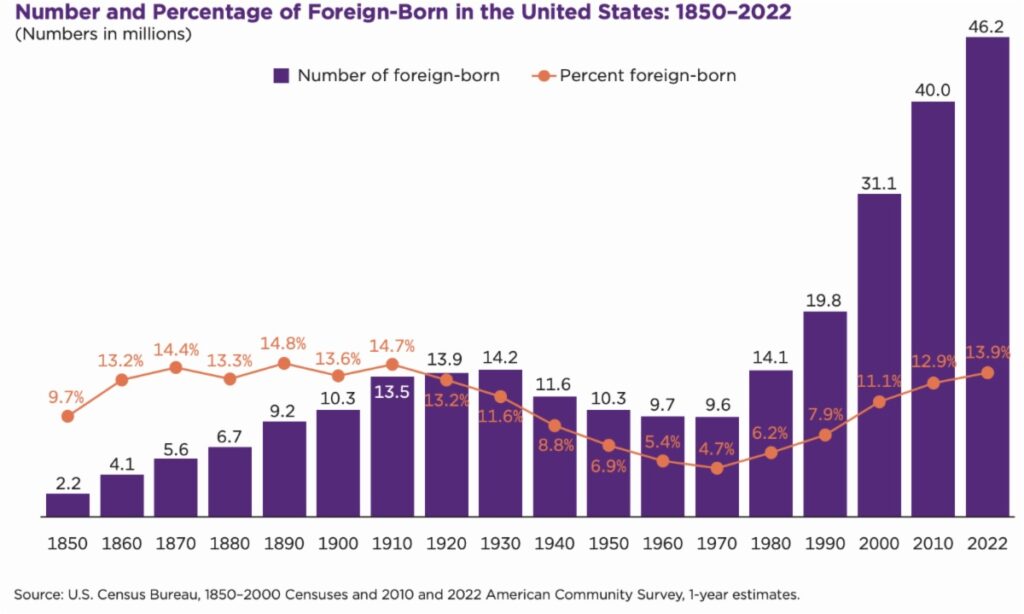April 2024

The foreign-born population in the U.S. has grown considerably over the past 50 years in both the size and share of the U.S. population, the Census Bureau reported this month. Citing statistics from its American Community Survey, the number of foreign-born residents rose nearly five-fold from 1970 to reach 46.2 million in 2022, while the percentage of foreign-born tripled to 13.9%.
That increase isn’t spread equally across the country, however. Nearly a quarter of the U.S. foreign-born population in 2022 lived in just one state: California. Add three more states–Texas, Florida, and New York–and you’ve accounted for half the foreign-born nationwide. In 34 states, foreign-born comprised less than 10%–and sometimes less than 5%–of the population. That said, some of the biggest increases in foreign-born were in those states, such as the 40% rise seen in Delaware, West Virginia, and both Dakotas.
Unlike Ellis Island days 125 years ago, when we last had a surge of immigration, half of today’s foreign-born come from Latin America–increasingly from Central and South America and less from Mexico. Another 31% of the foreign-born population hails from Asia. Nearly one-third of the country’s foreign-born (but only 30% of Latin-American born individuals) entered the U.S. after 2010.

